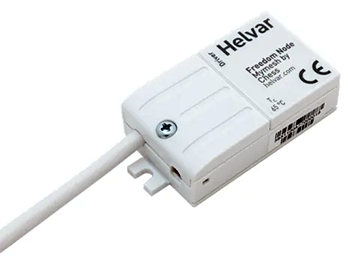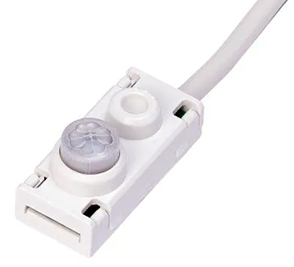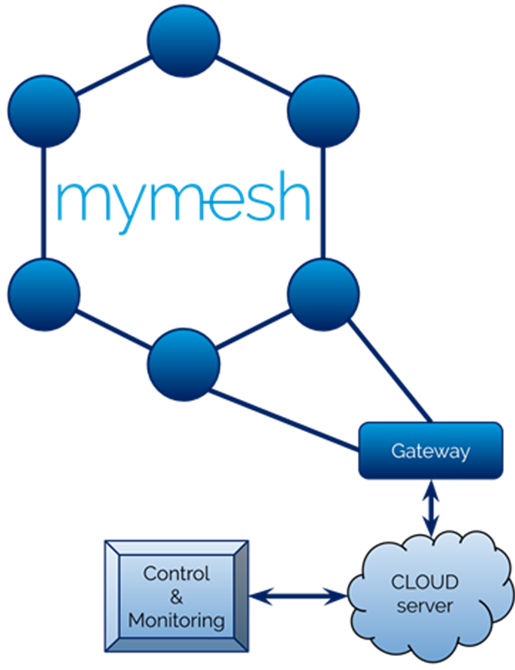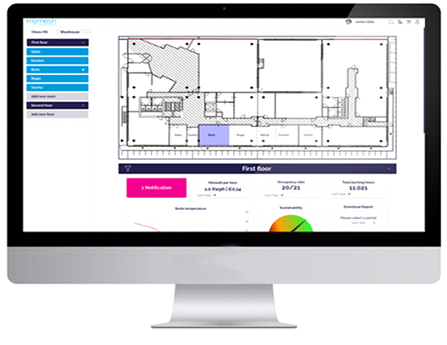We offer 4 levels of lighting control solutions.
More complex lighting controls require specialist expertise, so we partner with Chess Wise BV when our clients need a wireless, mesh-networked approach to lighting and building control. Chess Wise is a Dutch company, based in Haarlem, which has specialised in the fields of wireless control since it was founded in 1988. Our partnership with Chess Wise gives our clients the best of both worlds - the deep lighting expertise of NVC and the mesh networking and internet-of-things (IoT) expertise of Chess.
Chess has developed MyMesh. This is a mesh-networking system that is a platform for complete building control using an internet-of-things approach. It can be used for almost any building control function, including lighting control, emergency lighting testing, security and access control, HVAC, air quality, door/window opening, asset tracking, water leakage and more.
With MyMesh we can implement systems that are secure, scalable, robust and adaptive.
Traditional DALI lighting control. In a traditional lighting control system, all the communication between the system components is done using DALI. If a sensor detects someone has entered an area, or that the sun is now shining less brightly, it will communicate that via the DALI bus (or network). The DALI bus is a pair of wires that joins everything together and carries messages using the DALI language (protocol).

In this example, the sensor puts a DALI message onto the bus. The application controller (the brains of the system) receives the message, works out what the correct response is and generates a new DALI message, addressed to the appropriate lighting group. The message might tell the lights to switch on or get brighter. Each light fitting in the installation has a DALI driver with a unique address (or name) which understands DALI messages, so they respond as instructed and switch on to the correct light level.
If you need a general introduction to DALI, please check "What is DALI ?" article
DALI sounds great. Isn’t that enough? It works really well in many projects, but sometimes users and building managers want to go further. For example, sensors that detect the movement of people could be used not only to turn the lights on – they could also be used to track footfall in a shopping centre. The same information could be linked to the ventilation system, to increase air flow as more people move into an area, or to security and access control to prevent overcrowding and help enforce social distancing. Now we are moving towards the IoT – a world in which everything is linked, often via a cloud, and accessible for management, monitoring and control.
DALI was designed for lighting and it would not support the diversity of sensors and devices required in this example. Also, the DALI protocol is relatively slow – fine for lighting, but inadequate as data volumes start to rise.
This is where mesh-networking scores over a pure-DALI environment.
Mesh-networking. In our mesh-networking solution all the system components are connected using MyMesh nodes. A node is an Rf transmitter/receiver that talks to all the other nodes within range.
In the example above, if we were using MyMesh, the MyMesh sensor would transmit a message that more people had entered the area. The message would be carried wirelessly across the system (not using DALI) and all devices to which it was relevant would react.
No! MyMesh carries all the messages between the devices in the system wirelesly, but within each light fitting there is a MyMesh node. This takes messages it receives wirelessly and translates them into DALI and inserts them into the DALI driver in the light fitting. So, MyMesh uses DALI for lighting control but there is no DALI wiring and no DALI commissioning. To the installer, DALI is invisible because it is confined to the inside of the light fittings. We (NVC) know it’s there, but you don’t have to.

A MyMesh node from Chess. This would be inserted inside a light fitting. It has its own antenna - so it can communicate with other nodes up to 200m away. When it receives a message it “translates” it to DALI and communicates it to the DALI driver in the light fitting via two short wires.

A MyMesh node from Helvar. This can work with any Helvar “Freedom” driver or sensor, integrating it into a MyMesh installation.
The advantages of this approach are that:
MyMesh is not confined to hardware made by Chess, or just to light fittings. There is an ecosystem of manufactures all offering MyMesh enabled devices, including companies such as Helvar and Danlers.

A Helvar “Freedom” sensor. Connected to a Helvar node this becomes part of a MyMesh installation.

A Danlers MyMesh sensor. In this case, because of the size of the housing, the MyMesh node is built-in.
Wireless communication – is that reliable?
MyMesh is extremely reliable for two reasons.

In the 2.4GHz band MyMesh uses dedicated channels to avoid the heavy traffic generated by WiFi and Bluetooth. This makes MyMesh fast and reliable.
MyMesh dedicated channels.
This is done using an ipad and the MyMesh app. At the outset, all the devices in the network are on the left of the screen. One by one, swipe them to the right, assigning them to the light fittings that they will control as you go.
The rules and relationships you are creating as you do this are stored in the MyMesh network – not the ipad. This is truly distributed intelligence. There is no central server that could fail so the system is very robust.
If you need to add extra fittings or sensors they will become visible to the app as soon as mains power is applied to them. This makes it really easy to add to the system over time.
Yes and no.
The system will work well without a cloud connection at all. However, a cloud connection brings some extra functionality, such as:
A cloud connection also brings connectivity. If you managed a distributed estate such as a university campus or a large hospital a cloud connection means that you could access every node and reassign relationships between them from your home, phone or office.
My Mesh is very scalable in two ways:
In terms of size of installation, MyMesh can be almost any size you want, and it can start small and grow over time.

MyMesh can start as a single site, compact installation.

Over time it can grow to a multi site installation.
MyMesh is also scalable in terms of its functionality with three separate levels: Basic, Pro and Advanced. All three levels include sophisticated lighting control functions, but other capabilities such as emergency lighting testing come with the pro and advanced levels.

Whether Basic, Pro or Advanced is right for your project any MyMesh installation will be secure, scalable, robust and adaptive
Interested? For a deeper discussion, please contact us